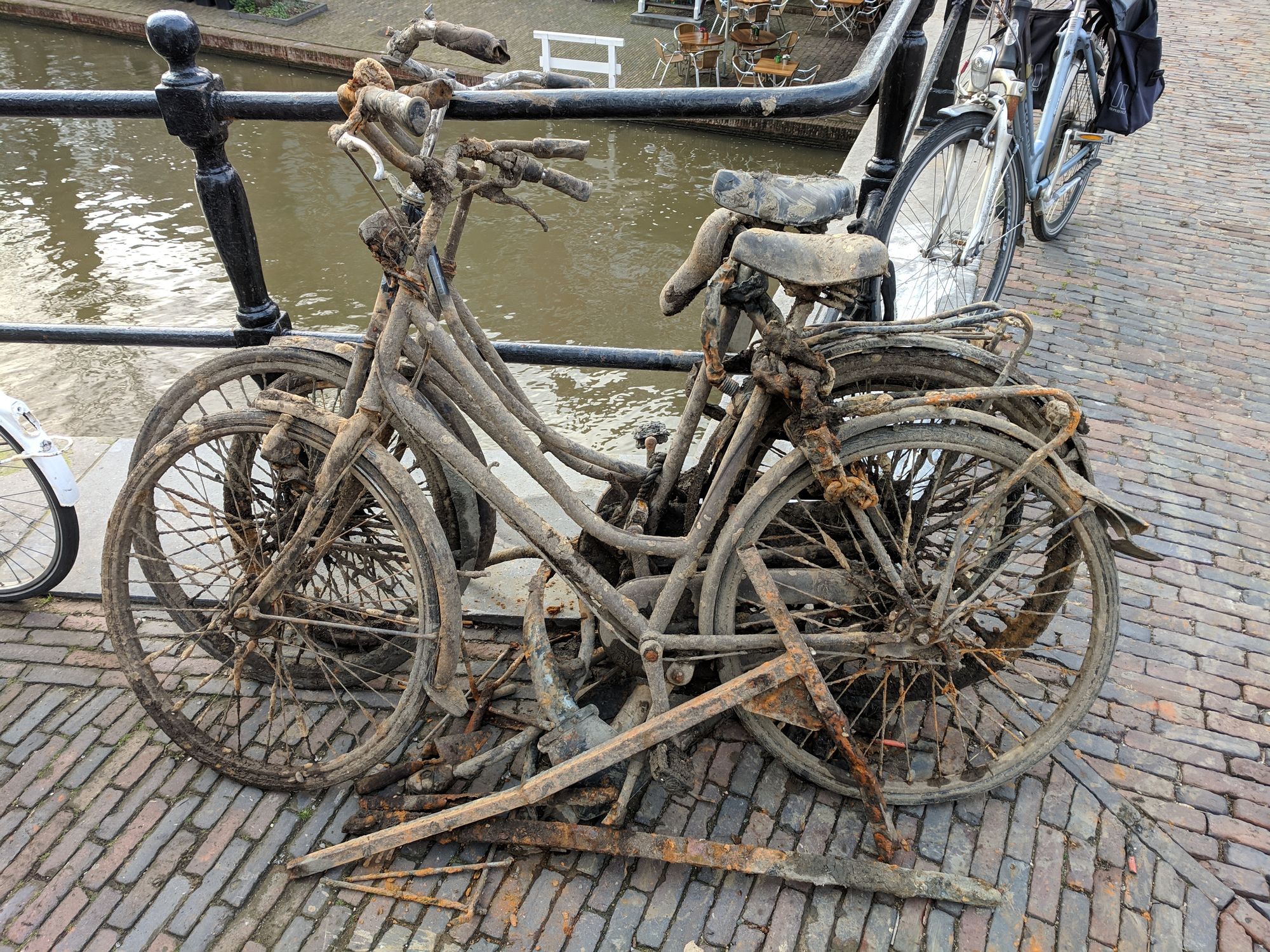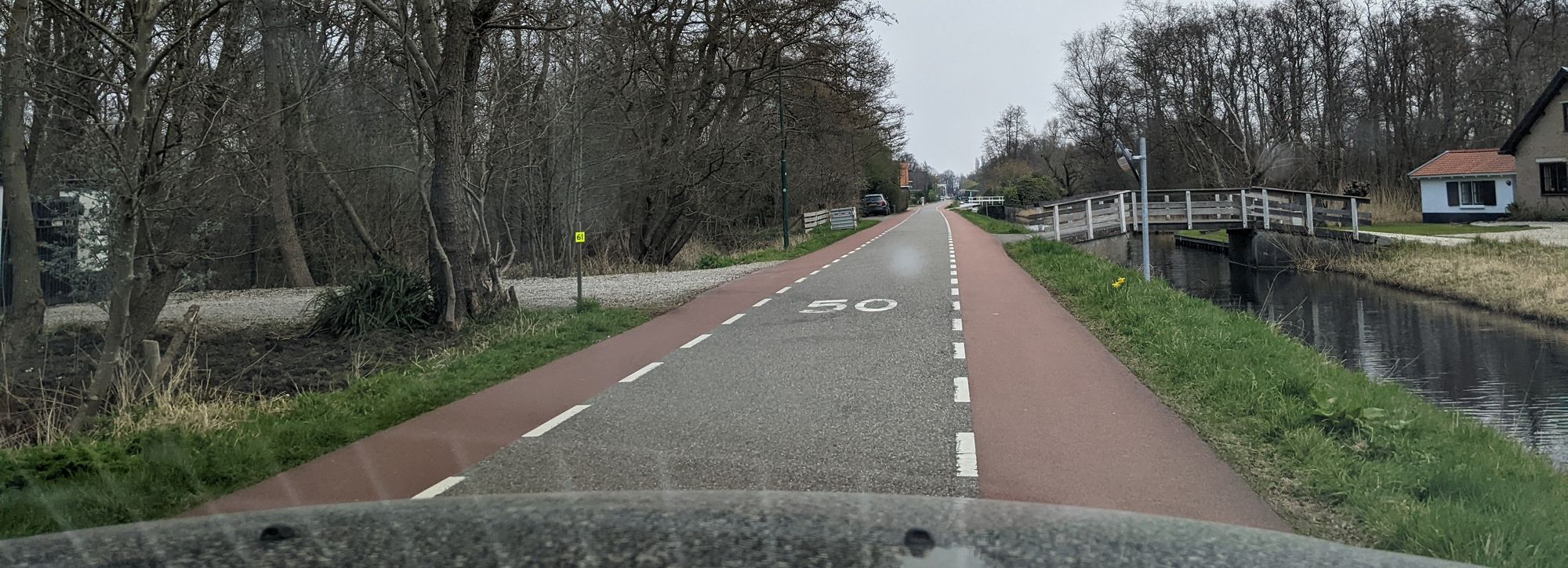How to get around
Some tips for traveling in the low country - if you're staying a while

The lay of the land
You'll likely fly into Schipol airport (AMS), which is the largest airport in the country.
Schipol is a short train ride to downtown Amsterdam, and a 30 minute drive or train ride to the center of Utrecht, where we live.
Utrecht is about center mass of the country. Amsterdam and the sea in the west, farms are in the north.

The country is small, and easy to get around. It takes about 2 hours to cross the Netherlands East to West, and 4 hours to cross it North to South. (Either driving, or taking a train.) Since most of the hot spots are clustered in the center, you're almost always an hour away from everywhere you want to go.
Planes
Despite the train-centric nature of Europe, Europeans will usually fly between cities instead of spending the day on the train.
Inter-Europe planes are generally cheaper than trains, and faster, but also include more waiting time, and security checks, etc.
Bikes
Bicycles are the most convenient way to navigate Dutch cities.
However, if you're a tourist, I'd proceed with caution.
- All bike paths are colored red - either bricks, pavers, or asphalt.
- If you are walking around and you see red beneath your feet, you have already been narrowly avoided by a dozen biking Dutch, likely with several "kut"s and "gatfer"s, and you should move immediately.
- Bike paths are narrow, walled with curbs, and support more lanes than you'd expect.
- Great biking prowess in the States is not sufficient for biking in the Netherlands. Bike paths can be little highways, with traffic, lane changes, and a few inches clearance between you and the bikes in front, behind, and to the sides. They have their own lights, signs, and conventions.
- Believe it or not: bike traffic jams do exist during rush hour.
- The official Dutch turn signal is a couple of fingers limply and momentarily gesturing in a direction with all the intelligibility of a cigarette ash-flick.
- 4 way bike intersections use the same convention that Americans are used to on roads.
Renting bikes
- Renting bikes is not that straightforward for tourists. If you're interested in renting bikes, contact us and we'll figure something out for you.
- Most train stations will have areas where you can rent government bikes. This is called OVFiets (oh-VAY-feets). However, it's not a good option for tourists because you have to register for a metro card before you can use this service.
- There are e-bike and e-moped rental options, like Tier.
Parking bikes
- Always double lock (lock the wheel and chain the bike to something) no matter how cute the neighborhood.
- Park illegally at your own risk. the Dutch will park their bikes anywhere and everywhere, and sometimes right on top of signs that say no-parking. The locals know when that's risky and when it's not, but you don't.
- A group of parked bikes will always tend to become a pile.
- Never leave anything attached to a parked bike that you care about.
- There are huge parking garages for bikes, and they are fun to use, but hard to navigate. All not-losing-your-car-at-the-mall conventions should be implemented 10-fold.
Trains
Trains are the recommended mode of transportation in the Netherlands.
They're clean, prompt, and bring you right into the center of basically every large and medium-sized city. However, trains don't bring you to small towns, and that includes the town with the wedding venue, but they will bring you to the hotel which is close by, and from there you have a few options.
There are mainly 3 types of trains: "intercity" (biggest and fastest), "sprinter" (mid-sized with lots of stops), "tram" (small and bus-like) which they pronounce like "trem". Trams exist in large cities like Amsterdam, Rotterdam, and Den Haag (the Hague).
To travel on any of the three, you need to buy an OV-chipcard (oh-vay-SHIP-cart) and put at least 20 euros on it. They're available at the airport, big stations, and some corner stores. They work like the DC MetroCard or an EZPass: you fill the card up with money at a machine, then tap your card on a terminal before you board a train and tap it again as you get off and you're debited based on how much you've traveled.
Google Maps will be sufficient for navigating the routes and schedules.
Crossing borders
There are no passport checks on trains that cross borders in Europe - at least not as a rule.
Europe is a very train-centric place, but as noted in the Planes section, Europeans seem to prefer planes when possible.
Of note: The last time I took the train from Berlin there was a huge (5 hour?) hiccup which is somewhat common (as I heard from the other passengers at the time), so I wouldn't advise taking the train long distances on a day where timing is crucial.
Driving
I can't really recommend renting a car while you're here. If you're trying to get to certain special places, it might be very convenient, but for tourists I think the cons outweigh the pros.
Below is the list of cons.
(If you're adventurous, then below is the list of "stuff to watch out for".)
- Cities are not car-friendly, by design. Car paths inside cities seem particularly circuitous, especially compared to bike paths.
- Parking is awful. Dutch cities are all about as dense as Jersey City or DC.
- The roads are complicated. In cities, bikes, buses, and trams all have their own lanes with their own lights, and there are sharp little curbs everywhere to remind you, even between lanes. The highways have Jersey-level jug-handles. If you miss a city turn or a highway exit, you might be looping around until after the wedding.
- Bikes are everywhere and they do not care that you can kill them. Bikes always have the legal right of way, and therefore the Dutch will cross in front of a car as if it wasn't there. In cities there are at least as many bike lanes as car lanes, so keep your head on a swivel.
- Manual transmission is normal; automatic transmission is luxury, and is reflected in rental pricing. If transmission mode is not specified, do not assume it's automatic.
- Neither of us knows anything about renting cars from the airport here. I don't think it's going to be as straightforward as in the Americas.
- There aren't a lot of highway cops, but there are a lot of speed cameras. Keep your favorite camera-sighting app ready.
- Conventions are different. EU signage is very esoteric - you can't just infer things like "no parking", "one way", "wrong way", "yield to oncoming traffic" from their designs.

- Also, there are these roads 👇 that look like single lane roads with two shoulders which are actually 2 lane roads with bike lanes on the edge, and you kinda straddle the lines to let oncoming traffic pass (assuming there are no bikers at the time).

Uber, etc
I tried Ubering a bit in the before-times, and it didn't work out too well. It exists, but at surprisingly low volume. Even if you're fine with the rate, the wait will be aweful. My guess is Dutch cities are frequently too car-unfriendly to get a good Uber market going. Fair warning.
(at the time of this writing there was one Uber on the map in all of 360k-population Utrecht.)
Uber Eats works like a champ, though. (It's all on bikes.)
And I'm not sure that cabs are a thing here.